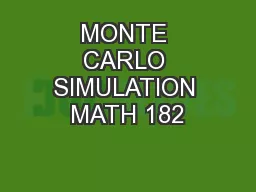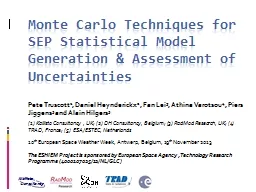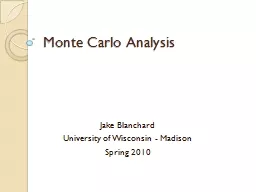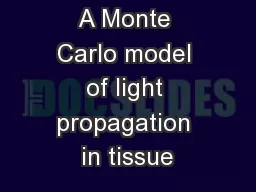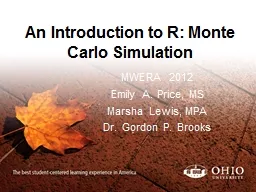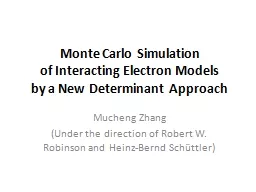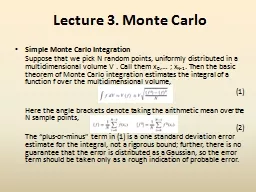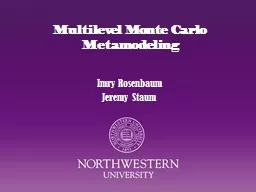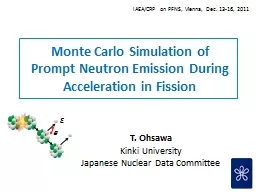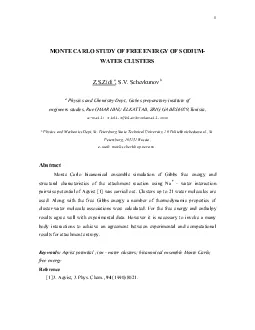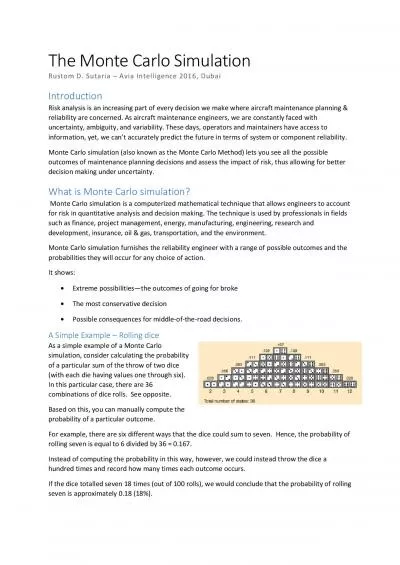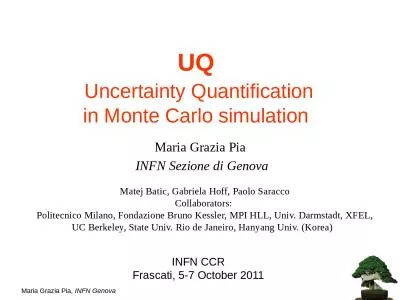PPT-MONTE CARLO SIMULATION MATH 182
Author : kittie-lecroy | Published Date : 2018-03-22
SIMULATION Simulation of a process the examination of any emulating process simpler than that under consideration Examples Systems Simulation such as simulation
Presentation Embed Code
Download Presentation
Download Presentation The PPT/PDF document "MONTE CARLO SIMULATION MATH 182" is the property of its rightful owner. Permission is granted to download and print the materials on this website for personal, non-commercial use only, and to display it on your personal computer provided you do not modify the materials and that you retain all copyright notices contained in the materials. By downloading content from our website, you accept the terms of this agreement.
MONTE CARLO SIMULATION MATH 182: Transcript
Download Rules Of Document
"MONTE CARLO SIMULATION MATH 182"The content belongs to its owner. You may download and print it for personal use, without modification, and keep all copyright notices. By downloading, you agree to these terms.
Related Documents

